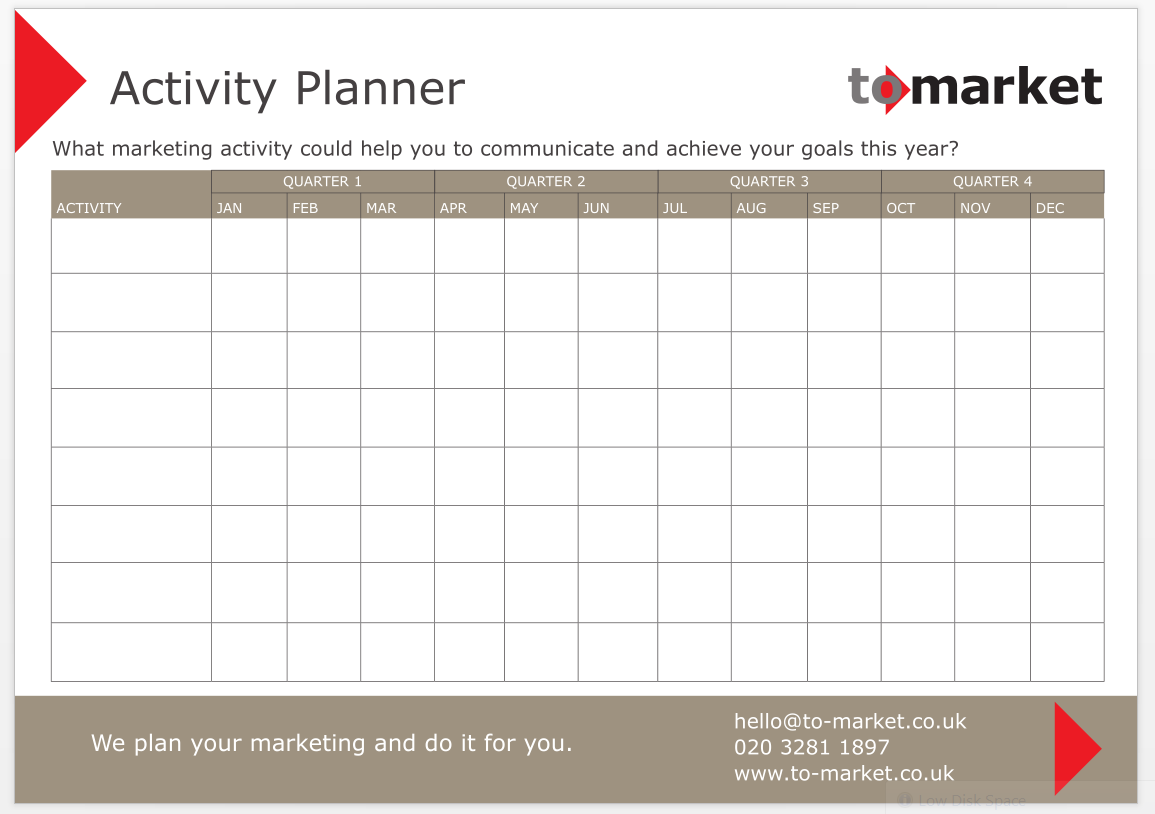Why Do A Marketing Audit?
The marketing audit process helps your company analsyse and evaluate your marketing strategies, activities, goals and results. While the process takes time, the results can be enlightening and might:
- Focus your communication of a consistent message to the right customers
- Reveal new, unknown or neglected markets
- Help fine-tune current strategies and plans to help increase market share
Here are the eight steps for conducting a marketing audit to capture the information a marketer needs about their company and how they do business.
- Assemble an Overview Of Your Company
The details to include are:
- Company location
- Date established
- Sales history
- Number of employees
- Key personnel
- Chronology of company events like mergers, acquisitions and divestitures
- An estimation of the current awareness level of the company
- An estimate of the perception of your company among your buying influencers
2. Describe Your Market Goals and Objectives
They can be concepts like:
- Increase company visibility
- Increase audience size
- Differentiate from the competition
- Increase or maintain market share
- Generate qualified sales leads or
- Increase usage within existing customers
List your goals and objectives as being;
- Long-term, with 6 – 8 goals listed in priority order to be accomplished in the next two years
- Short-term, with a 1 – 2 goals to be accomplished in the next 12 months
3. Describe Your Current Customers
Include information like:
- Job titles or functions, industry or SIC codes, geographic location, company size and other demographic, ethnic or behavioural descriptions
- Size of your current customer audience.
4. Describe Customers You’d Like to Target
Include the same type of information used in 3 but also include:
- If your target customers are outside of your usual industry, geography or size of current customers
- Any internal or external factors that have changed in your business or industry causing you to target a particular group
- A behaviour that needs to be present for re-targeting to occur
- The size of your target customer audience
Free Marketing Planner Template Here
5. Describe Your Product or Service
Describe these in terms of their purpose, features, benefits, pricing, sizing and distribution methods. Also include:
- Strength or weakness as compared to the competition
- Any economic, legal, social, technical, seasonal or governmental factors that affect the product/service
- What the current awareness level is as well as the perception of your product/service
- Sales or market share history and any changes over time
6. Describe Your Past Business or Marketing Encounters
Describe what has:
- Helped grow your business as well as what has not helped grow business
- Not been tried but might have helped
- Your competition has been doing to grow their business.
7. Identify Three to Six Competitors
Include the company name and location. Describe their products/services in terms of their:
- Features
- Benefits
- Pricing
- Sizing
- Distribution methods
- Sales or market share history
- Your competition’s strategy for the near future
8. Begin to Outline a Communication Plan
Begin to list current and future media sources, if costs are fixed annual costs and what funds are available for new efforts for:
- Advertising routes such as broadcast, print, out-of-home and online advertising
- Promotional vehicles like website, collateral, direct marketing, interactive and online marketing
- Media relation routes such as media contacts, public relations and articles
- Event vehicles like trade shows, special events, seminars and webinars
- Analytic vehicles like databases, market research and tracking systems
- List any promotional medium considered to be the most effective to date.
Once this information is written down on paper, you can refer back to it as your roadmap to achieving your marketing goals and objects for the coming year. And as new ideas pop up, this document can help remind you of the big picture. Minor adjustments can be made along the way as changes are bound to occur in sales, customer retention and product development throughout the year.
Are you making the most of your marketing?
Find out – book your team marketing audit here. 



















Leave a Reply
Your email is safe with us.